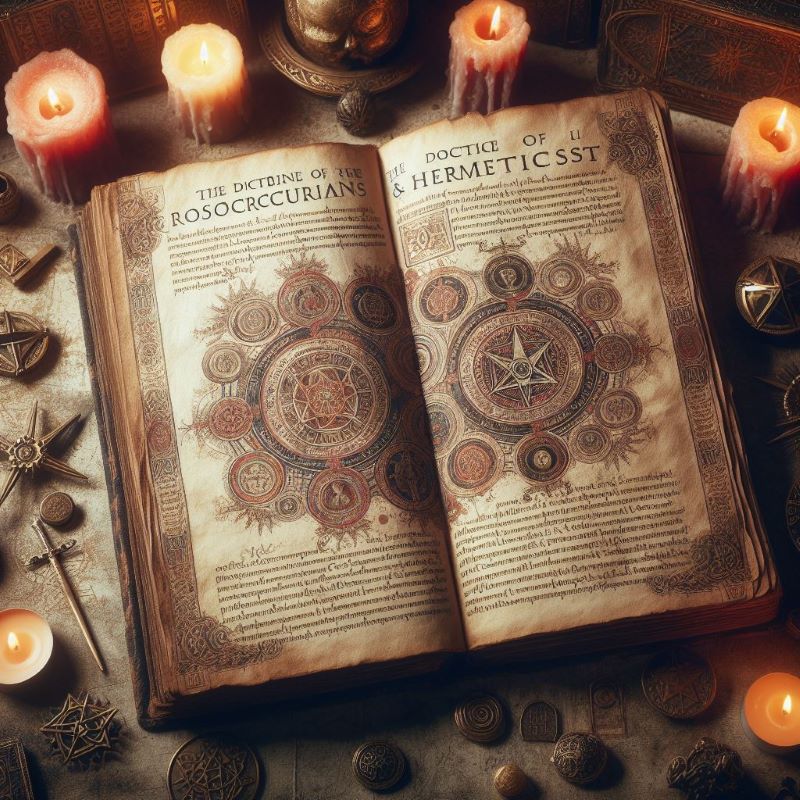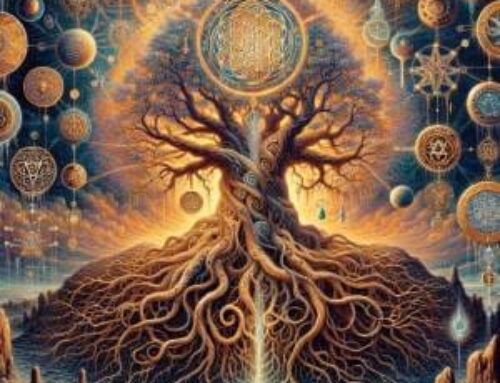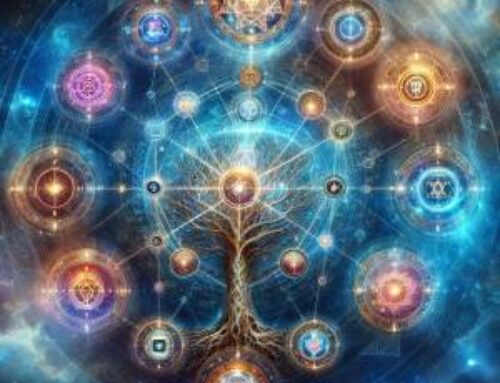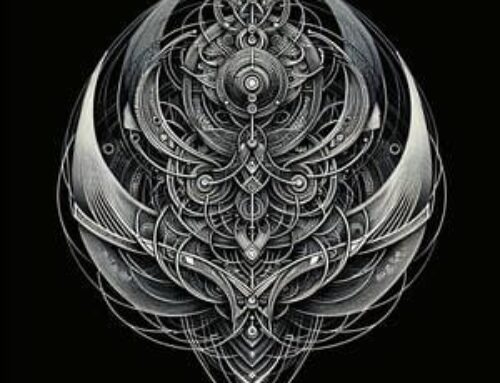Contents
- 1 Introduction to “Rosicrucianism vs Hermeticism”
- 2 Philosophical Foundations: Delineating the Core Beliefs of Each Tradition
- 3 Exploring the Mystical Paths: Hermeticism’s Cosmic Wisdom vs. Rosicrucianism’s Esoteric Journey
- 4 Rosicrucianism vs Hermeticism: A Comparison of Spiritual Exercises, Practices and Rituals
- 5 Influence on Modern Esotericism: Assessing the Impact on Contemporary Spiritual Movements
- 6 Prominent Figures and Texts: Highlighting Key Contributors and Their Works
- 7 Conclusion of Rosicrucianism vs Hermeticism:
- 8 FAQ-Rosicrucianism vs hermeticism
- 9 References:
Introduction to “Rosicrucianism vs Hermeticism”
In the kaleidoscope of Western esotericism, two traditions—Rosicrucianism vs Hermeticism—shine through the annals of time and thought, offering paths veiled in allegory and symbol. Their quests, though varied in expression, converge in the pursuit of ancient wisdom and the alchemical transformation of the soul.

Rosicrucianism, a paragon of spiritual alchemy and mystic Christianity, surfaces in the early 17th century through manifestos that beckoned a universal reformation of mankind. It promised a renaissance of ancient truths shrouded in the enigmatic writings of purported sages and seers. It speaks not merely of personal enlightenment but of healing society’s wounds through the transmutation of individual souls.
In contrast, Hermeticism draws its breath from a more primordial source, claiming lineage from the legendary Hermes Trismegistus—a sage who embodies the synthesis of Greek and Egyptian wisdom. The Hermetic corpus, rich with philosophical, astrological, and theurgical musings, dates back to antiquity and outlines a cosmos infused with a divine intellect—an anima mundi—accessible through gnosis and inner transformation.
Though distinct in their origins and narratives, both paths offer a mosaic of spiritual insights: Rosicrucianism, with its secret brotherhoods and esoteric symbolism, and Hermeticism, with its emphasis on the microcosm-macrocosm parallel, beckoning the adept towards the achievement of the Great Work.
This introduction shall serve as an overture to the symphony of their teachings, harmonizing the high notes of their historical impact with the bassline of their enduring mysteries. As we embark on this exploration, we thread the needle through the tapestry of their doctrines, unearthing the intricate patterns that map the journey of the seeker towards enlightenment.
In our passage through the philosophical underpinnings and historical impressions of these traditions, we pay homage to their influence on modern esoteric movements and their revered texts and figures. Ultimately, we strive to discern the goals laid on the path to enlightenment, contrasting the inner alchemy of the Rosicrucian with the universal wisdom of the Hermeticist.
Philosophical Foundations: Delineating the Core Beliefs of Each Tradition
The Wisdom of Hermes Trismegistus
Hermeticism, drawing its core beliefs from the revered ancient texts attributed to Hermes Trismegistus, emphasizes the power of the mind and the potential for humans to achieve divine-like wisdom and understanding. The Hermetic tradition holds that the material world is a reflection of the spiritual realm and that by studying the laws of nature, one can gain insight into the divine order of the universe.
The Rosicrucian Pursuit of Gnosis
Rosicrucianism, with its eclectic blend of alchemy, mysticism, and Kabbalistic elements, centers on the pursuit of gnosis — the knowledge of spiritual truths. It proposes that through personal introspection and the refinement of the self, one can attain a higher state of consciousness that allows for a deeper understanding of the cosmos and one’s place within it.
Interconnectedness and Transformation
Both traditions underscore the interconnectedness of all things and advocate for an internal transformation that aligns the individual’s microcosm with the universal macrocosm. Hermeticism teaches the concept of ‘As above, so below,’ suggesting that the workings of the heavens are mirrored in the internal spiritual journey of the individual. Similarly, Rosicrucianism espouses the transformation of the soul through stages of enlightenment, drawing from mystical Christian imagery and sacraments.
The Magnum Opus and Alchemical Symbolism
Alchemy serves as a bridge between the physical and spiritual in both traditions, symbolizing the process of transmutation from base to enlightened states. Hermeticism treats the magnum opus — the great work of alchemy — as an allegory for personal rebirth and spiritual regeneration, while Rosicrucian alchemy integrates the search for the philosopher’s stone with the quest for spiritual rebirth.
Ethics and the Hermetic Virtues
Ethics play a crucial role in the practice of both Hermeticism and Rosicrucianism. The pursuit of wisdom is paralleled by a moral philosophy that emphasizes virtues such as integrity, humility, and compassion. These virtues are not merely social constructs but are seen as fundamental principles that maintain the cosmic balance.
Exploring the Mystical Paths: Hermeticism’s Cosmic Wisdom vs. Rosicrucianism’s Esoteric Journey
Hermeticism
Rooted in the wisdom of Hermes Trismegistus, the philosophy of Hermeticism emerges from the belief in the interconnectedness of the cosmos and the axiom “As above, so below.” This ancient adage encapsulates the correspondence between the macrocosm and the microcosm, inviting a deep contemplation of the universe’s divine intricacies and the individual’s spiritual journey. Hermeticism also encompasses alchemy, not just as a material practice but as a metaphor for spiritual purification and transformation, where the practitioner’s goal is to harmonize the inner and outer worlds through a profound understanding of nature’s forces and virtues.
Rosicrucianism
While also drawing from Hermetic wisdom, Rosicrucianism, as reflected in your content, is distinguished by its unique initiation system and its focus on spiritual wisdom as manifested in the quest for enlightenment and spiritual growth. The Rosicrucian path is marked by alchemy, both as a symbol for spiritual transformation and as a practical application in the quest for deeper understanding and integration of life and death mysteries. At the heart of Rosicrucian philosophy lies the commitment to a “brotherhood”, a spiritual family bonded through inner connection despite external challenges. Rosicrucians acknowledge the harmony between science and spirituality, striving for a balance between knowledge and faith, and building a bridge between these realms.
Both traditions share a commitment to the transformative power of spiritual practice and the belief in the capacity of the individual to achieve a state of higher knowledge and enlightenment. While Hermeticism emphasizes the universal, cosmic nature of this journey, Rosicrucianism offers a structured, community-oriented path that also upholds the value of mystical experience and the pursuit of esoteric wisdom.”
Rosicrucianism vs Hermeticism: A Comparison of Spiritual Exercises, Practices and Rituals
When discussing Rosicrucianism vs Hermeticism, it’s important to note that both have rich histories in the study of hidden knowledge:
Hermeticism
The heart of Hermetic practice lies in the mastery of the self through the principles of the macrocosm and microcosm. Hermetic rituals are deeply symbolic, serving as a bridge between the material and the spiritual worlds. The Clavicula Salomonis, for example, emphasizes the importance of trust and reliance on the divine. These practices are not merely for the sake of ritual but aim at spiritual development, harnessing the power of symbols, meditation, and the elements to expand consciousness and integrate the cosmic dance into daily life.
Rosicrucianism
The Rosicrucian tradition is marked by its initiation system, where rituals play a crucial role in the spiritual awakening and growth of its members. These rituals, deeply rooted in alchemy, symbolize spiritual transformation and the mysteries of life and death. The essence of Rosicrucian practice is the creation of a spiritual family, a brotherhood that remains connected despite external challenges, recognizing the harmony between science and spirituality. This tradition seeks to balance knowledge and faith, connecting seemingly separate realms through its teachings and rituals.
Both Hermeticism and Rosicrucianism utilize rituals and practices as vehicles for spiritual enlightenment, with Hermeticism focusing on the individual’s cosmic connection and Rosicrucianism emphasizing communal growth and the mystical path. These esoteric traditions offer pathways to understanding the divine and transforming the self, each with its unique set of practices and spiritual goals. Rosicrucianism vs Hermeticism is a fascinating topic due to their shared yet distinct paths towards enlightenment and understanding of the universe.
Influence on Modern Esotericism: Assessing the Impact on Contemporary Spiritual Movements
The Hermetic Resurgence
The rediscovery and translation of pivotal texts such as the “Corpus Hermeticum” during the Renaissance laid the groundwork for a profound Hermetic influence on modern esoteric traditions. The principles of Hermeticism, emphasizing the interconnectedness of the universe and the potential for human beings to ascend to higher states of consciousness, have permeated various contemporary spiritual movements. This resurgence has inspired a renewed interest in ancient wisdom, manifesting in the practices and teachings of modern Hermetic orders and societies.
Rosicrucianism vs Hermeticism: Rosicrucianism’s Enduring Legacy
Rosicrucianism, with its rich tapestry of alchemical, mystical, and philosophical elements, has significantly influenced modern esoteric thought. The mysterious allure of the Rosicrucian tradition, its emphasis on inner transformation, and the pursuit of enlightenment have found expression in a multitude of spiritual communities. Through its graded system of initiation and the integration of science and spirituality, Rosicrucianism continues to offer a unique pathway to understanding the deeper mysteries of life and the universe.
Cross-Pollination of Esoteric Traditions
The interaction between Hermeticism, Rosicrucianism, and other esoteric traditions has fostered a rich, cross-cultural exchange of ideas and practices. This synthesis has contributed to the diversity and depth of modern spiritual movements, allowing seekers to explore various paths to wisdom and enlightenment. The blend of Hermetic and Rosicrucian principles with those of other traditions highlights the universal quest for knowledge and the transcendent.
Modern Revival and Adaptation
In the contemporary era, the internet and digital communication have facilitated a global revival of interest in Hermeticism and Rosicrucianism. Access to ancient texts, teachings, and communities is unprecedented, enabling a wider audience to engage with these traditions. This digital renaissance has sparked a new wave of spiritual exploration, as seekers worldwide draw on the timeless wisdom of Hermeticism and Rosicrucianism to navigate the complexities of modern life.
Prominent Figures and Texts: Highlighting Key Contributors and Their Works
Hermeticism: Foundations and Key Texts
At the heart of Hermeticism lies the Corpus Hermeticum, attributed to Hermes Trismegistus, a legendary Hellenistic figure who is often regarded as a confluence of the Greek god Hermes and the Egyptian god Thoth. This foundational text delves into topics of theology, philosophy, and the natural world, encapsulating the essence of Hermetic wisdom.
Rosicrucianism vs Hermeticism: Renaissance and the Revival of Hermetic Thought
The Renaissance period marked a significant revival of Hermeticism, with figures such as Marsilio Ficino playing a pivotal role in translating the Corpus Hermeticum into Latin, thus making its wisdom accessible to the Western world. This era also saw the flourishing of esoteric societies and the integration of Hermetic principles into the arts, sciences, and philosophy, profoundly influencing the cultural and intellectual landscape of Europe.
Rosicrucianism: Manuscripts and Influence
The publications of Rosicrucianism can be traced back to the early 17th century, with the publication of manifestos such as the Fama Fraternitatis and the Confessio Fraternitatis. These texts called for a universal reform of knowledge, blending alchemical, mystical, and Christian elements to forge a path towards enlightenment and spiritual renewal. The teachings of the Rosicrucian Order are distinguished by their graded system of initiation, deeply imbued with a desire for spiritual wisdom that manifests in the quest for enlightenment and spiritual growth.
Influential Movements and Modern Adaptations
The impact of these traditions extends into modern esoteric movements, with organizations such as the Hermetic Order of the Golden Dawn in the late 19th and early 20th centuries drawing heavily upon Hermetic and Rosicrucian principles. This era saw the emergence of notable figures like William Wynn Westcott and S.L. MacGregor Mathers, who sought to synthesize these ancient teachings with contemporary spiritual practices The Hermetic Order of the Golden Dawn, a significant organization in the history of Western esotericism, ceased its operations after 8 years of activity
Conclusion of Rosicrucianism vs Hermeticism:
In conclusion, the exploration of Rosicrucianism vs Hermeticism uncovers a profound narrative of spiritual search and discovery that spans centuries. Understanding Rosicrucianism vs Hermeticism is crucial for anyone studying the roots and evolution of Western mystical traditions. These traditions, each with its rich heritage and complex philosophies, have not only survived the test of time but have flourished, influencing countless seekers and contributing to the tapestry of Western esoteric thought. The journey through their philosophical foundations, practices, rituals, and the notable figures who have championed their causes reveals a shared pursuit of enlightenment and understanding of the natural world and the cosmos.
Rosicrucianism, with its structured approach to spiritual enlightenment, and Hermeticism, with its emphasis on the primal wisdom of the universe, offer paths that, while distinct, converge on the same fundamental truth: that through the pursuit of knowledge and the practice of certain spiritual disciplines, individuals can achieve a deeper understanding of themselves and the universe. This realization serves as a bridge, connecting the past with the present, the esoteric with the exoteric, and the individual with the universal.
As we stand at the crossroads of history and modernity, the teachings of Rosicrucianism and Hermeticism beckon us to embark on a journey of self-discovery and transformation. They challenge us to look beyond the material, to question, to seek, and ultimately, to find. The call to action is clear: engage with these ancient wisdoms, explore their relevance in today’s world, and contribute to the ongoing dialogue between tradition and innovation, between the sacred and the mundane.
Explore the Mysteries of Rosicrucianism vs Hermeticism
Dive deeper into the mysteries of Rosicrucianism and Hermeticism with the Hermetic Academy. Join a community of seekers, scholars, and practitioners dedicated to exploring the depths of esoteric knowledge. Enroll in courses, participate in meditations, rituals, initiations, and access a wealth of resources designed to support your journey towards spiritual enlightenment.
FAQ-Rosicrucianism vs hermeticism
1: How do Rosicrucianism and Hermeticism differ in their approach to enlightenment?
A: Rosicrucianism, as a Hermetic order, intricately weaves Hermetic principles into its initiatory path towards enlightenment. Both traditions, while interlinked, utilize these shared foundations to guide seekers on a profound journey of spiritual discovery.
2: Can modern science and Hermeticism coexist?
A: Yes, Hermeticism encompasses a holistic view of the universe that includes both the material and spiritual. It encourages a harmonious relationship between scientific inquiry and spiritual wisdom.
3: What are the practical benefits of studying Rosicrucian and Hermetic principles?
A: These principles foster personal growth, enhanced awareness, and a deeper understanding of the interconnectedness of all things, leading to a more meaningful and purposeful life.
4: How can I start practicing Hermeticism or join a Rosicrucian order?
A: Get involved with mystery schools like the Hermetic Academy, which offers structured courses, initiations, webinars, retreats, and resources for beginners and advanced practitioners alike.
5: Are the teachings of Rosicrucianism and Hermeticism relevant in today’s digital age?
A: Absolutely. The core teachings about the nature of reality, personal transformation, and the pursuit of wisdom are timeless and can provide profound insights into modern life’s challenges.
References:
(1) Ficino, M. (1471). Corpus Hermeticum. Florenz.
(2) Jahangiri, M. (2022). The Expansion of Consciousness during Mystical Experiences: The Example of Moses. Religions. https://doi.org/10.3390/rel13101003.
(3) Kant, I. (2015). What is Enlightenment. https://doi.org/10.1017/9781787440609.002.
(4) Rubenstein, E. (2023). Alchemy: Secrets of Consciousness Transformation. Hermetic World, Paphos.
(5) Rubenstein, E. (2023). Magic: The Legacy of the Rosicrucians. Hermetic World, Paphos.





